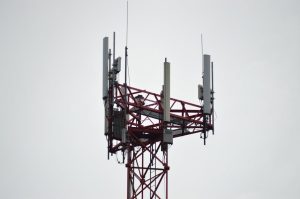
GEO Satellites: The Backbone of Global Communication
GEO satellites, or Geostationary Earth Orbit satellites, have been a crucial component of global communication for decades. With the ability to provide high-speed internet, television broadcasting, and navigation services, these satellites have revolutionized the way we communicate and access information. In this article, we will delve into the world of GEO satellites, exploring their history, functionality, and impact on modern society.
History of GEO Satellites
The concept of GEO satellites was first introduced by scientist Arthur C. Clarke in 1945. Clarke proposed the idea of placing a satellite in a geostationary orbit, which would allow it to remain stationary relative to a specific point on the Earth’s surface. This idea was initially met with skepticism, but it eventually became a reality with the launch of the first GEO satellite, Syncom 2, in 1963. Since then, hundreds of GEO satellites have been launched, providing a wide range of services to people around the world.
Functionality of GEO Satellites
GEO satellites operate by transmitting and receiving signals to and from Earth-based stations. They are placed in a geostationary orbit, which is approximately 36,000 kilometers above the equator. At this altitude, the satellite’s orbital period matches the Earth’s rotational period, allowing it to remain stationary relative to a specific point on the Earth’s surface. This enables the satellite to provide continuous coverage to a specific region, making it ideal for applications such as television broadcasting and navigation.
GEO satellites use a variety of frequencies to transmit and receive signals, including C-band, Ku-band, and Ka-band. These frequencies are allocated by the International Telecommunication Union (ITU) and are used for different applications. For example, C-band is commonly used for television broadcasting, while Ku-band is used for internet connectivity and navigation.
Impact of GEO Satellites
The impact of GEO satellites on modern society has been significant. They have enabled global communication, providing high-speed internet and television broadcasting to remote and underserved areas. They have also played a critical role in navigation, providing location-based services to millions of people around the world. Additionally, GEO satellites have been used for weather forecasting, disaster management, and environmental monitoring, among other applications.
Challenges and Future Developments
Despite the many benefits of GEO satellites, there are several challenges associated with their use. One of the main challenges is the risk of satellite congestion, which can lead to interference and signal degradation. Another challenge is the growing problem of space debris, which can pose a risk to operational satellites. To address these challenges, researchers are working on developing new technologies, such as advanced propulsion systems and debris removal systems.
In conclusion, GEO satellites have revolutionized global communication, providing high-speed internet, television broadcasting, and navigation services to people around the world. Their impact on modern society has been significant, and they will continue to play a critical role in the future of global communication. As technology continues to evolve, we can expect to see even more advanced and efficient GEO satellites, enabling new applications and services that will transform the way we live and work.

